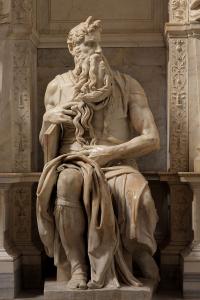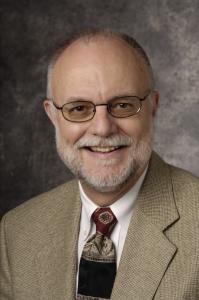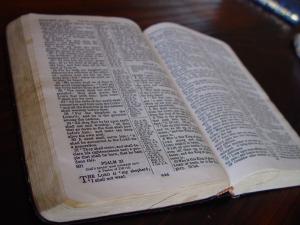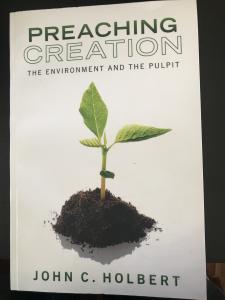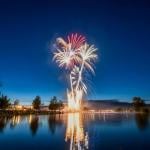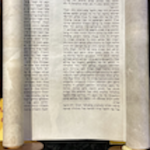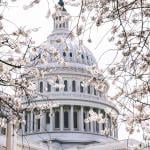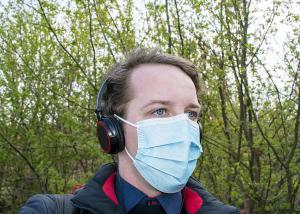 I need not tell you that we are living in very strange times. I live in Los Angeles, where we are still under a strict lockdown after over three months of the same. Many parts of my adopted state are opening, but cautiously, allowing certain businesses to welcome patrons inside restaurants, shops, even barbershops and hair salons in a few places, but not LA. We have yet to demonstrate a significant easing of the march of the virus, so need to stay close to home. And if we do venture out—which I at 73 years of age have done about three times in three months, outside of a walk in the neighborhood— we are legally demanded to mask ourselves and to stay at least six feet from any other humans. I fear not all Anglenos are complying, as any number of beach photos will attest, but in the main about 80% are heeding the calls. Whether that will be enough to “flatten the curve” and reduce the too-steady dying remains to be seen.
I need not tell you that we are living in very strange times. I live in Los Angeles, where we are still under a strict lockdown after over three months of the same. Many parts of my adopted state are opening, but cautiously, allowing certain businesses to welcome patrons inside restaurants, shops, even barbershops and hair salons in a few places, but not LA. We have yet to demonstrate a significant easing of the march of the virus, so need to stay close to home. And if we do venture out—which I at 73 years of age have done about three times in three months, outside of a walk in the neighborhood— we are legally demanded to mask ourselves and to stay at least six feet from any other humans. I fear not all Anglenos are complying, as any number of beach photos will attest, but in the main about 80% are heeding the calls. Whether that will be enough to “flatten the curve” and reduce the too-steady dying remains to be seen.
I think I understand why some younger citizens are reluctant to mask themselves in the bright sunshine of Southern California. Is it not our right, they cry, to welcome the beautiful sun, sand, and surf in the spring? Is this not precisely why we live here, not in gloomy Seattle or rainy Portland or any number of other spots in the USA that simply do not measure up, weather-wise and scenery-wise, to LA-LA land? Besides, why should I wear a mask, covering my sparkling lovely face when those of my age group are the least likely to contract the beast? I can see easily why older people (like me!) need to take extra care by masking, since their danger level is high. I do not want them getting sick with this stuff, so I affirm and applaud their masks! And after all, the president never wears a mask, so why should I?
Ah, there’s the rub! President Trump, for shifting and confusing reasons, refuses to wear a mask at all, thus modeling negatively for the country he supposedly serves, announcing clearly and forcefully that mask wearing is for “sissies” or “the weak” or for those not blessed with his fabulous health. Trump and I are the same age, but unlike me he is in constant contact with any number of people, two of whom we know have tested positively for COVID-19, one his valet. His appearances publically without a mask sends a message to his base supporters especially that he is somehow above all this virus silliness, and is magically immune from its ravages. Open the country up, he exhorts; look at me! There is nothing to be afraid of!
Yesterday, May 26, the presumptive Democratic candidate for the presidency, Joe Biden, appeared, masked and distanced, in an interview, his first since the pandemic struck in March, and called the president “a fool” for not wearing a mask. Harsh language, for sure, but not far off the mark, I do not think. By not wearing a mask, as his own medical spokespeople, Drs. Fauci and Birx have suggested then demanded for weeks, Trump is not only a fool, but a possibly dangerously asymptomatic carrier of the virus. That fact is why one needs to wear a mask in public. The mask is not to protect yourself from COVID-19; the mask is to protect others from you. Ironically, the president, always concerned with himself beyond all others around him, may think he is self-protecting by his maskless face, but in fact he is threatening all those in his vicinity by refusing the mask. It has long been suggested by those who are not his supporters that he is above all an unredeemed narcissist, concerned primarily with his image, his wealth, his popularity. Not wearing a mask reveals that narcissism as not only unpleasant, but potentially deadly.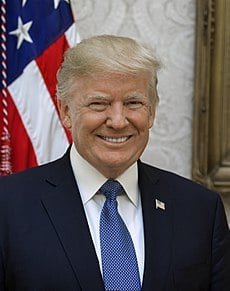
Actually, the ancient Hebrew Bible has a mask story of its own. It is a peculiar tale, tucked away at the end of a momentous confrontation between YHWH, Moses, and the people of Israel on and near the sacred mountain of Sinai. Though Moses has presumably received the famous ten words from YHWH back in Ex.20, another list of commands is given to him at Ex.34:10-26. This list has a rather more ancient ring, according to some scholars, including sharp commands against idol worship and the necessity of celebrating certain festivals, offering appropriate sacrifices during their celebration, and carefully observing the demands of Sabbath rest. After receiving this new list from YHWH, Moses fasts for 40 days and nights, and writes the list “on the tablets” (Ex.34:28). Earlier, it was YHWH who had written the more familiar list (Ex.32:16).
After Moses had written the divine list, he heads back down the mountain, but he was unaware that “the skin of his face shone because he had been talking to God” (Ex.34:29). As I have written in other places, this verse’s translation has been the cause of much peculiar controversy about exactly what has happened to Moses on the sacred mountain. Jerome’s Latin translation of the verse employs the word “cornuta,” “horned,” reading the Hebrew word keren, as it is often understood. However, the Septuagint of the 3rd century BCE, that Jerome apparently did not consult, read the verse as “Moses’s face was glorified,” a translation followed by nearly all English renderings. Michelangelo’s famous statue of ca.1513 with its prominent horns, took quite literally Jerome’s Vulgate version. Interestingly, another statue in Bern, Switzerland, the so-called Mosesbrunnen, or “Moses fountain,” from 1544 has rays protruding from Moses’s head rather like horns of light. However we are to understand the change that has overcome the lawgiver due to his meeting with YHWH, the people observe the change and “were afraid to come near him” (Ex.34:30). Moses eventually convinces them to draw near in order to hear what God has commanded them through Moses, their intermediary.
Seeing the fear his strangely changed face continues to cause, Moses then “put a veil on his face” (Ex.34:33). He covers himself in order to protect the radiance that his face now projects, a radiance that brings terror to those he wants to enlighten, yet not overwhelm with the wonderful power of the divine presence. The word translated “veil” is a Hebrew word found only here in Ex.34. However difficult it is to translate the word precisely, the reading “veil” seems appropriate, because Moses is attempting to protect his people from the changed physical circumstances brought on by his encounter with YHWH. Indeed, when he returns to chat with God, “he took the veil off, until he came out” (Ex.34:34); speaking with YHWH alone he has no need of the veil. But the minute he returns to the people, he replaces the veil to protect them from the unique power of God. The veil is designed exactly to protect the people of Israel from the dangers of divine power.
Is it too much of a stretch to suggest that Moses’s act of protection mirrors our own need to protect those we contact by using a veil, a mask, as a sign that we are thinking of others and not just of ourselves? Tiny Bible tales like this one may serve us well at this time of social distancing and the necessity of protecting those whom God presents to us by wearing a covering over our face, a face that unknown to us may be glowing with COVID-19. We do well by following the example of Moses, intent on his people’s protection, and wearing a mask, rather than following the poor example of President Trump, who by refusing the mask demonstrates little regard for those he has sworn to lead and protect.
(Images from Wikimedia Commons)